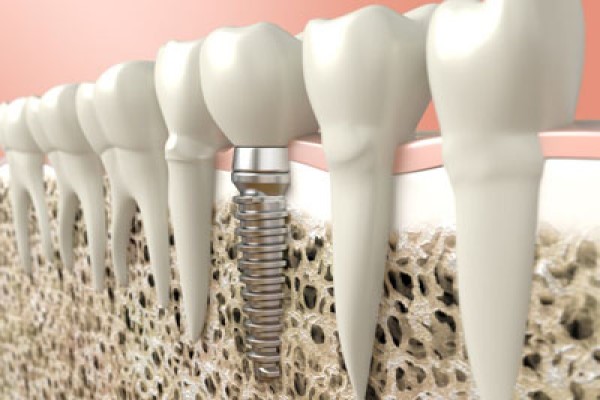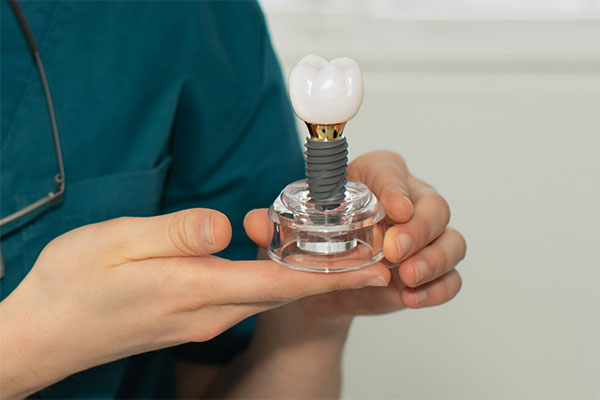Dental Implants: When Is a Bone Graft Necessary?

Dental implants are one of the ways that dentists replace missing teeth. These dental prosthetics serve as substitute teeth roots for missing teeth and prevent the bone tissue breakdown that typically comes from missing teeth.
Dental implants are placed in a person's jaw using oral surgical techniques. This requires the patient to be healthy enough for surgical treatments and to have enough bone tissue to keep the restoration in place.
Figuring out when bone grafts are needed for dental implants
There is no way to place an implant into a person's jaw if the bone tissues there lack a certain level of thickness for implants. Let us take a look at how implants are installed to better understand why bone grafts are sometimes necessary.
The process
The installation of implants typically starts with the dentist injecting the patient with an anesthetic. This numbs the area being worked on so the patient does not feel pain during the procedure. Depending on the location of the tooth being replaced, the dentist might have to cut into the patient's gum tissue to reach the area of the jaw that the lost tooth was anchored on.
The dentist then drills a hole into the patient's jaw. This hole is just big enough to hold the implant in place. The dentist pushes the implant into the hole until the friction generated by bone tissues around the implant is enough to hold it there. The dentist closes up any incisions made to finish the procedure.
The bone tissues will keep the implant in that spot over the next six months as osseointegration takes place. This is the process of bone tissues fusing with the implant, making it one with the jaw. Those who lack the bone tissues needed to secure implant while the restoration bonds with the jaw will need bone grafts.
Types of dental bone grafts
Here are common types of bone grafts performed by dentists prior to the placement of implants:
Socket grafts: These types of grafts are performed right after a tooth falls out to prevent the alveolar bone tissue from breaking down. This type of graft involves placing bone tissue in the socket. Patients should be clear to proceed with implants about four months after the procedure. Socket grafts also lead to less discomfort after the installation of implants.
Lateral ridge preservation graft: These grafts are used to widen a patient's jaw so an implant can be placed.
Block grafts: These types of grafts are recommended when the patient has significant defects on their jaw. Blocks of donor tissue can be harvested from the back of the jaw and used to fill up any defects.
Sinus lift graft: These grafts are usually performed when the patient needs an implant placed in their upper jaw.
Replace your missing teeth
Call or visit our Brooklyn clinic to learn more about how bone grafts and implants can be used to replace your missing teeth.
Request an appointment here: https://www.gardendentalartsny.com or call Garden Dental Arts at (718) 416-6367 for an appointment in our Brooklyn office.
Check out what others are saying about our dental services on Yelp: Dental Implants in Brooklyn, NY.
Recent Posts
The introduction of dental implants has provided a solution to tooth replacement that goes beyond mere function to address the core of personal well-being. Loss of teeth has an impact on a lot more than just dental health — it impacts chewing, talking ability, and confidence. This is where dental implants come into play as…
If you are missing one or more teeth, you are probably considering getting them replaced. Dental implants have become a popular option for teeth replacement. Although there are many benefits of this option, it is not necessarily the right choice for everyone. Along with meeting the requirements of what it takes to be a good…
Today, there have been many advancements in the dental industry, including dental implants. These allow for a long-term replacement for missing teeth, whether caused by decay or trauma. The implants are durable and feel like natural teeth, making them an ideal solution. Keep reading if you want to learn more about this option.One of the…
Many patients who have multiple missing teeth are choosing dental implants over other tooth replacement solutions due to the benefits they offer. It is helpful to know how the treatment process works when deciding whether it is right for you.Many general dentists recommend dental implants due to their long-term cosmetic and health benefits. The following…


